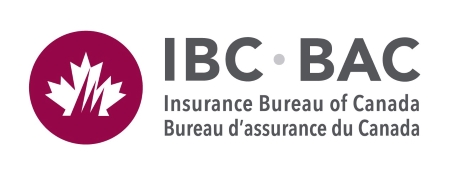TORONTO, June 1, 2018 /CNW/ - The saying is "April showers bring May flowers," but in Ontario, the last few months brought a series of severe, and unique, weather events. Insured damage from an early-May windstorm affecting Ontario and parts of Quebec topped $410 million – with $380 million of this damage in Ontario alone – according to Catastrophe Indices and Quantification Inc. (CatIQ). For Ontario, this is the most costly insured event since the 2013 Toronto floods, which caused almost $1 billion in damage.
Widespread wind damage was reported across several regions of Ontario and parts of Quebec on Friday, May 4. Strong wind gusts lasted for several hours, leading to roof damage, downed trees and power outages. "It has been quite a damaging year so far," said Kim Donaldson, Vice-President, Ontario, Insurance Bureau of Canada (IBC). "This year alone insurers have already paid out three-quarters of a billion dollars, just five months into 2018."
The following is a list of the major storms that have hit Ontario so far in 2018:
- January 2018 – Winter storm damage in Toronto, London and southwestern Ontario of nearly $10 million
- February 2018 – Water and winter storm damage in southern Ontario of over $40 million
- Early April 2018 – Wind and rain storm damage in southern Ontario topping $79 million
- Mid-April 2018 – Winter storm and ice storm in Toronto and southwestern Ontario of over $187 million
- May 2018 – Windstorm damages of $380 million across Ontario.
The numbers above are just the insured losses associated with these natural catastrophes and not the costs to governments, which have been growing at an even faster rate.
Donaldson added, "Insured losses from extreme weather storms have been increasing rapidly. However, this is only part of the picture. Taxpayers are bearing the brunt of the costs that are not covered by insurance. Consumers are witnessing more frequent, intense storms, which we now know are attributable to climate change. The cost of climate change is real."
Homeowner Tips
One way to mitigate future damage is to look at the condition of your roof. Hail, wind and other types of severe weather seen this year can do serious damage to a roof. Get out your binoculars and inspect your roof from the ground. If you have one layer of asphalt shingles, your roof may be more susceptible to hail or ice damage than a roof with two layers. Common signs of age-related wear and tear or potential issues may include:
- Cracked, curling or missing shingles
- Rain gutters that are filled with leaves, nests or other types of debris
- Asphalt debris or granules in a gutter or on the ground
- Wear around chimneys or other fixtures
- Unsecured drainage and downspouts that angle toward a foundation.
You may also check inside your attic for signs of wear on your roof. Look for:
- Outside light coming through your roof
- Visible signs of water damage
- Sagging boards.
It is important to maintain your property on an ongoing basis to prevent damage to your home. It is also important to understand your insurance policy, knowing what is covered and what the coverage limits are. Check with your insurance representative if you have questions. For more information on how to protect your property against these types of storms, visit IBC's website.
About Insurance Bureau of Canada
Insurance Bureau of Canada (IBC) is the national industry association representing Canada's private home, auto and business insurers. Its member companies make up 90% of the property and casualty (P&C) insurance market in Canada. For more than 50 years, IBC has worked with governments across the country to help make affordable home, auto and business insurance available for all Canadians. IBC supports the vision of consumers and governments trusting, valuing and supporting the private P&C insurance industry. It champions key issues and helps educate consumers on how best to protect their homes, cars, businesses and properties.
P&C insurance touches the lives of nearly every Canadian and plays a critical role in keeping businesses safe and the Canadian economy strong. It employs more than 120,000 Canadians, pays $9 billion in taxes and has a total premium base of $52 billion.
For media releases and more information, visit IBC's Media Centre at www.ibc.ca. Follow IBC on Twitter @InsuranceBureau or like us on Facebook. If you have a question about home, auto or business insurance, contact IBC's Consumer Information Centre at 1-844-2ask-IBC.
About CatIQ
Catastrophe Indices and Quantification Inc. (CatIQ) delivers detailed analytical and meteorological information on Canadian natural and man-made catastrophes. Through its online subscription-based platform, CatIQ combines comprehensive insured loss indices and other related information to better serve the needs of the insurance and reinsurance industries, the public sector and other stakeholders. To learn more, visit https://www.catiq.com/.
SOURCE Insurance Bureau of Canada

If you require more information, IBC spokespeople are available to discuss the details in this media release. For interviews please contact: Steve Kee, Director, Media & Digital Communications, 416-362-2031 ext. 4387 (office), 416-841-5669 (cell), [email protected]

Share this article